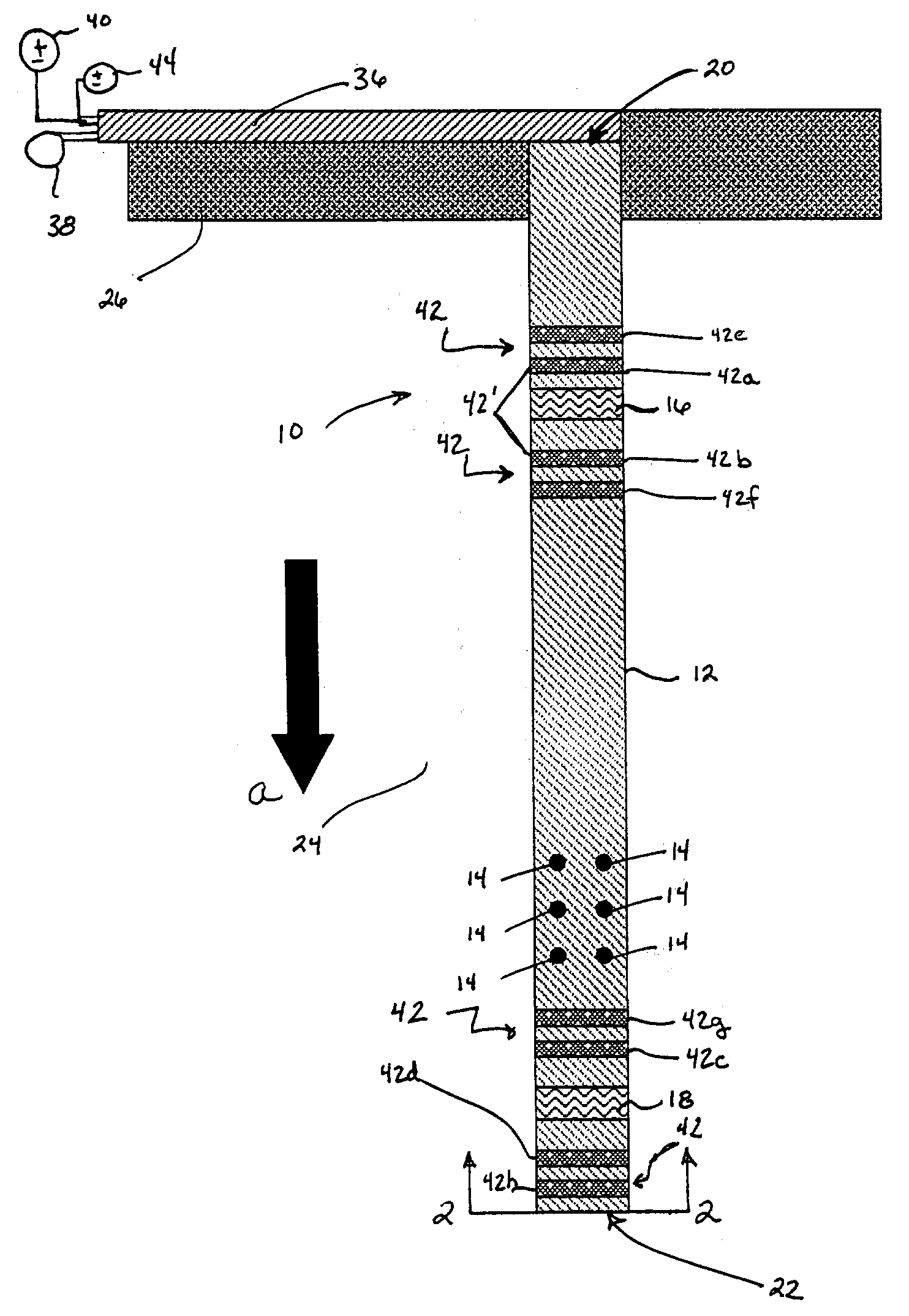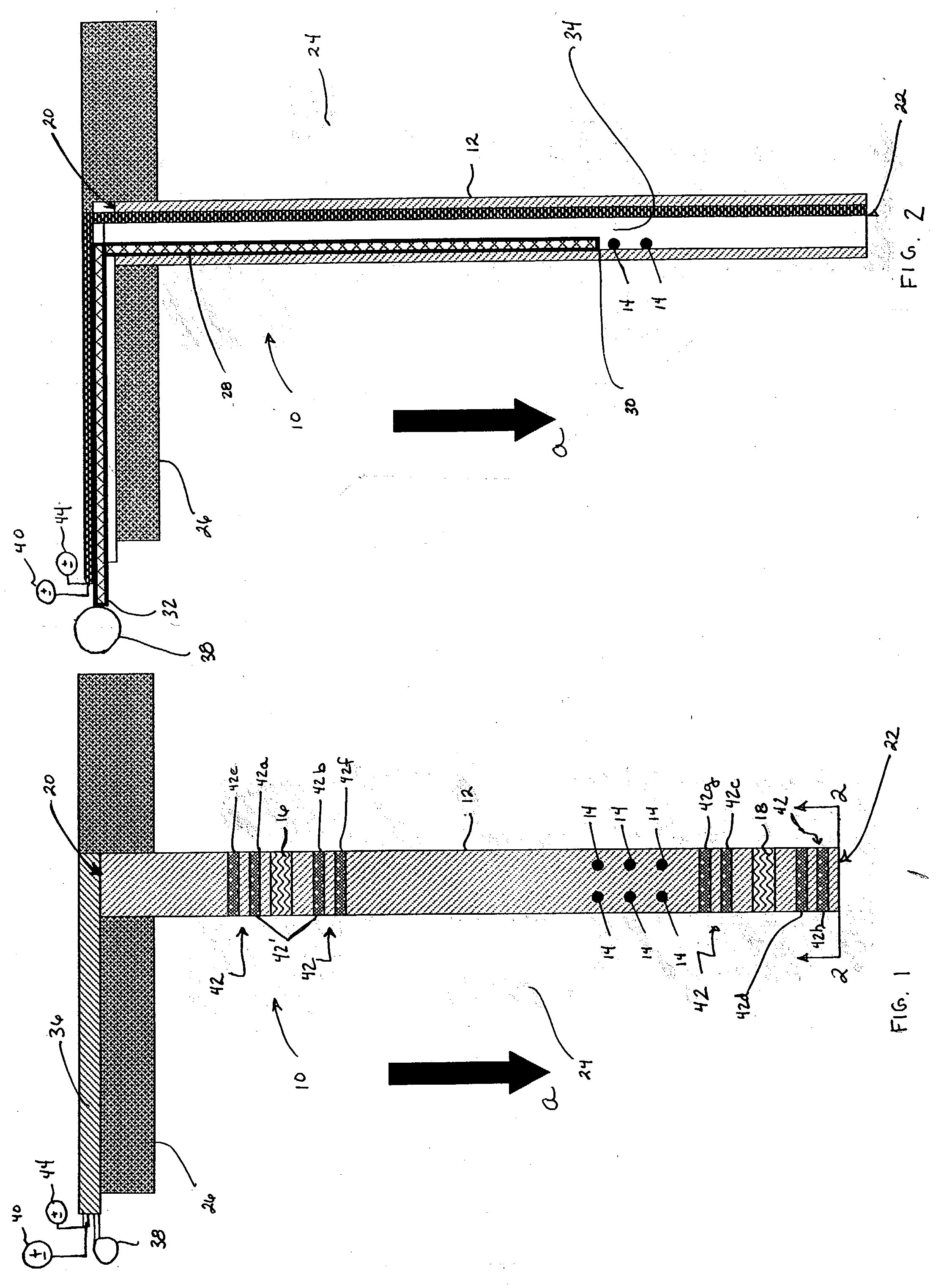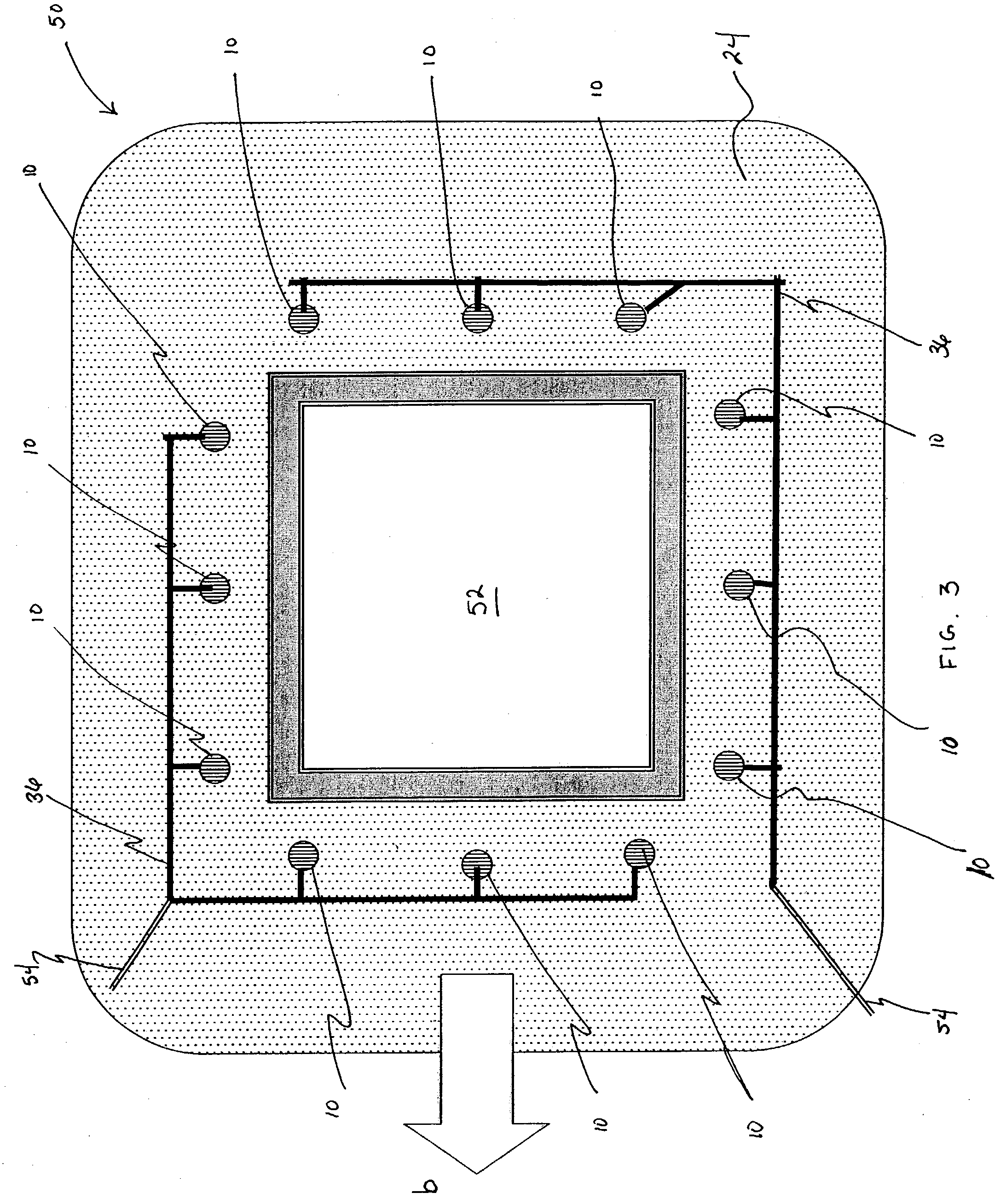Method and system for dewatering particulate materials
a technology of particulate materials and dewatering systems, which is applied in the direction of fluid pressure measurement, liquid/fluent solid measurement, peptide measurement, etc., can solve the problems of deterioration of materials, large amount of energy used, unstable stockpiling and heavy transportation or disposal,
- Summary
- Abstract
- Description
- Claims
- Application Information
AI Technical Summary
Benefits of technology
Problems solved by technology
Method used
Image
Examples
Embodiment Construction
[0027] Referring now to the drawings, and specifically to FIGS. 1 and 2, there is shown a probe 10 for dewatering a particulate material according to the present invention. Dewatering probe 10 generally includes a non-conducting pipe 12 having a plurality of drainage holes or slots 14. An anode 16 and a cathode 18 are mounted on non-conducting pipe 12 adjacent opposing top and bottom ends 20, 22, respectively, thereof. Pipe 12 functions both as a sonde for mounting anode 16 and cathode 18 and as a well used to extract water that collects around the outside of and flows into pipe 12 via holes 14.
[0028] In FIGS. 1 and 2, probe 10 is shown oriented in a particulate material 24 beneath a concrete slab 26 such that anode 16 is above cathode 18. This substantially vertical orientation is preferred, as water will flow in the direction of arrowhead a due to both gravity and electro-osmotic forces, whereas an inverse configuration (that is, with cathode 18 above anode 16) would cause water f...
PUM
| Property | Measurement | Unit |
|---|---|---|
| voltage | aaaaa | aaaaa |
| voltages | aaaaa | aaaaa |
| electrically | aaaaa | aaaaa |
Abstract
Description
Claims
Application Information
 Login to View More
Login to View More - R&D
- Intellectual Property
- Life Sciences
- Materials
- Tech Scout
- Unparalleled Data Quality
- Higher Quality Content
- 60% Fewer Hallucinations
Browse by: Latest US Patents, China's latest patents, Technical Efficacy Thesaurus, Application Domain, Technology Topic, Popular Technical Reports.
© 2025 PatSnap. All rights reserved.Legal|Privacy policy|Modern Slavery Act Transparency Statement|Sitemap|About US| Contact US: help@patsnap.com



